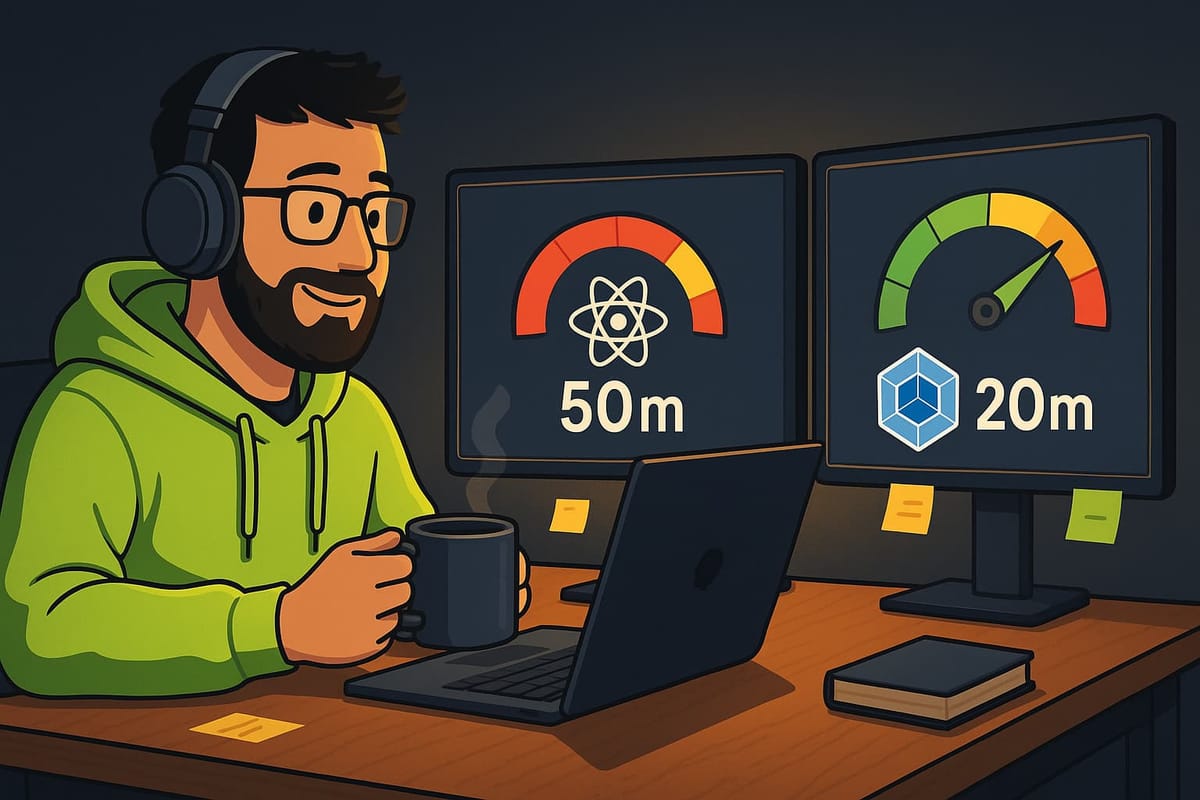From 50 Minutes to 20: How We Slashed Build Times in Our React Application

In software development, time is more than money—it’s momentum. Slow build times not only frustrate developers but also stall progress, delay feedback, and sap energy from your team. Faced with a sluggish 50-minute build pipeline and 20-minute local builds, we knew we had to make a change.
What followed was a deep architectural refactor and a strategic optimization of our build system. The result? Pipeline builds dropped to 20 minutes, and local builds now complete in just 2. Here’s how we made it happen.
⸻
The Bottleneck: Submodules Gone Wild
Our application was structured around multiple submodules, a decision originally made in favor of modularity and reusability. But as the project scaled, this approach started to show cracks:
1. Dependency Complexity – Each submodule managed its own dependencies, making upgrades and version alignment difficult.
2. Redundant Build Triggers – A change in one submodule could trigger rebuilds across several others, even if unrelated.
3. Long Build Times – The overhead of resolving interdependent modules slowed everything down.
4. Painful Feedback Loops – Developers had to wait far too long to validate their changes locally.
We realized the structure was over-engineered for our use case—and it was time to simplify.
⸻
The Fix: Flatten the Architecture
We took a bold step: we flattened the codebase by merging all submodules into a single src directory. To preserve existing import paths and keep things maintainable, we leaned on Webpack aliases. Here’s the strategy in detail:
1. Consolidating Code
All submodule code was moved into the main src folder. This reduced the complexity of managing multiple repositories and made the development experience more unified.
2. Alias Everything
To avoid rewriting every import across the codebase, we created Webpack aliases pointing to the newly consolidated paths:
resolve: {
alias: {
'@module1': path.resolve(__dirname, 'src/module1'),
'@module2': path.resolve(__dirname, 'src/module2'),
// ...
}
}
This allowed our team to continue using familiar import patterns without sacrificing the benefits of a simplified structure.
3. Reworking the Webpack Config
With the architecture flattened, we turned our attention to the build toolchain. Key improvements included:
• Tree Shaking – Unused code is now removed during the build, resulting in leaner bundles.
• Persistent Caching – We enabled Webpack’s cache to avoid recompiling unchanged modules.
• Parallelization – By integrating thread-loader, we enabled multi-threaded Babel transpilation.
• Smarter Code Splitting – We refined our bundle strategy to create smaller, more targeted chunks.
4. Simplifying Dependency Management
We merged all dependencies into a single package.json, eliminating duplication and dramatically speeding up dependency resolution. This also reduced the bloat in node_modules.
⸻
The Payoff: Faster, Smoother, Better
The impact of these changes was immediate and significant:
• Pipeline Build Time: Reduced from 50 minutes to 20 minutes
• Local Build Time: Reduced from 20 minutes to 2 minutes
• Live Feedback: Changes now reflect almost instantly, making debugging and iteration much faster
• Developer Happiness: With faster builds, our team moves with more confidence and less frustration
⸻
What We Learned
1. Simple Wins – Sometimes the best architecture is the simplest one. Over-engineering hurts more than it helps.
2. Measure Before You Move – Tools like Webpack Bundle Analyzer helped us pinpoint bottlenecks and optimize precisely.
3. Developer Experience is Key – Build speed affects morale. Every second saved is a small morale boost and productivity win.
⸻
What’s Next?
Now that we’ve flattened our architecture and optimized our build system, we’re looking ahead:
• Continue monitoring build times and look for further improvements
• Share our findings and learnings with the dev community
• Experiment with migrating to Vite for even faster builds
⸻
By simplifying our structure and streamlining our tooling, we unlocked dramatic improvements with relatively little disruption. If your team is struggling with long builds, consider flattening the architecture and trimming the fat—your future self (and your CI/CD pipeline) will thank you.




Comments ()